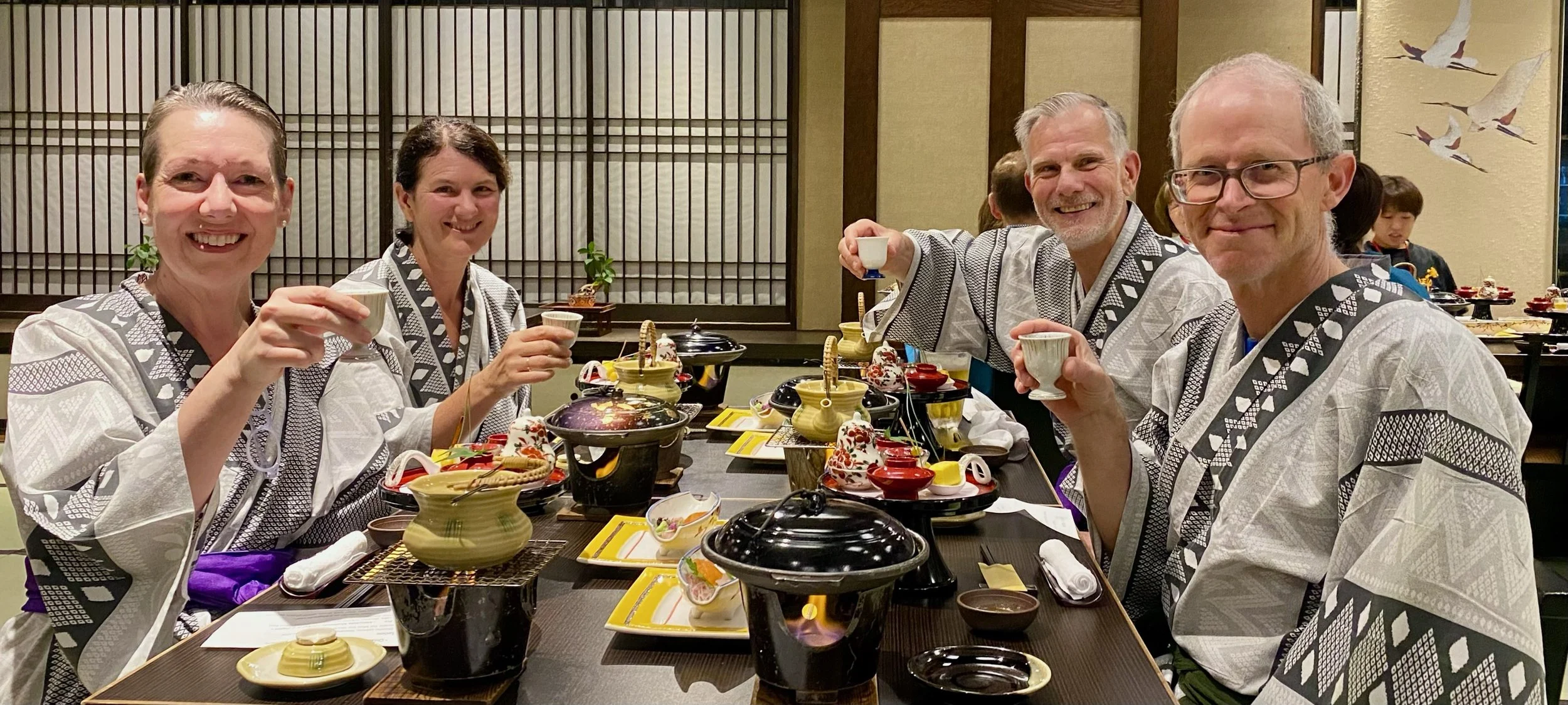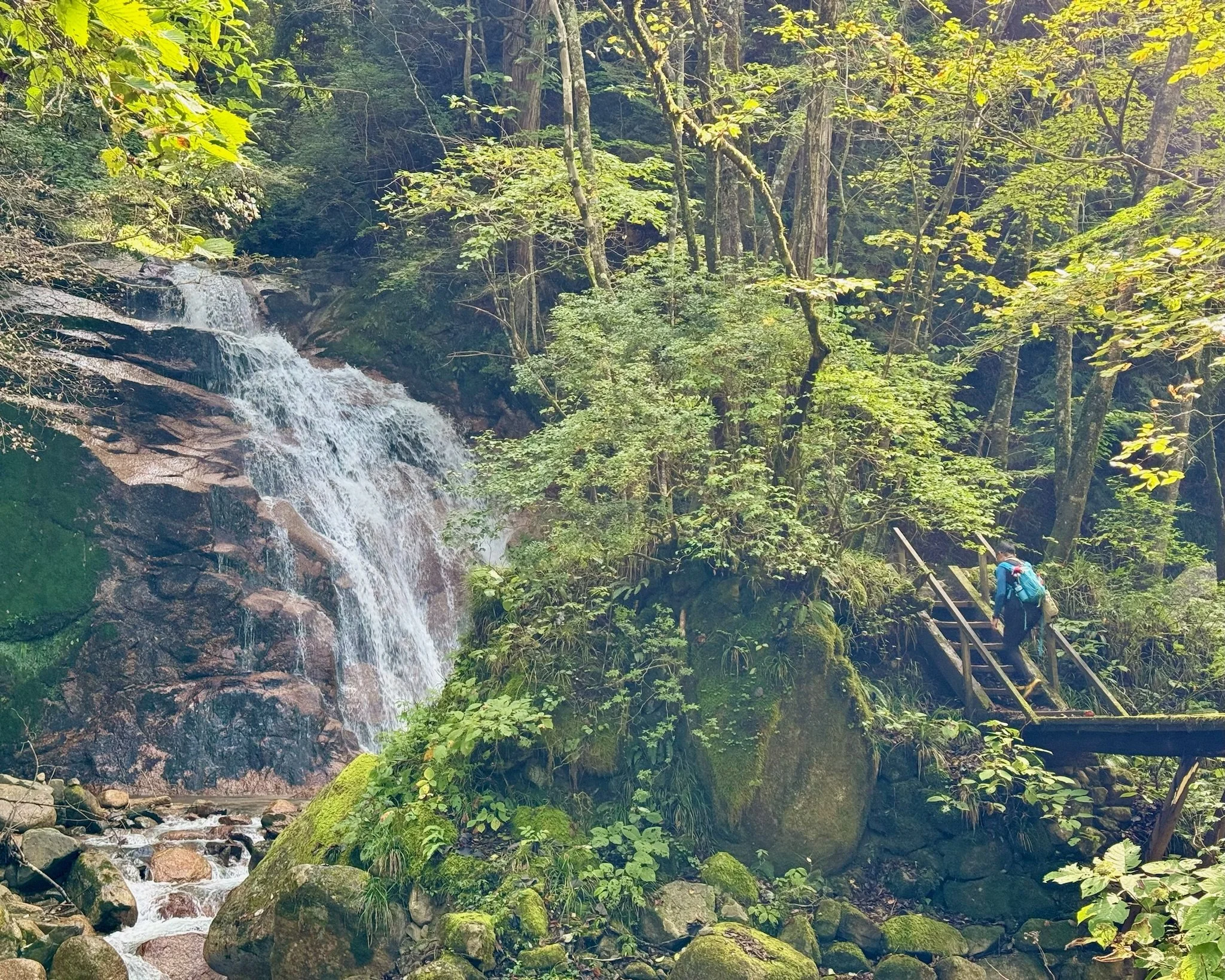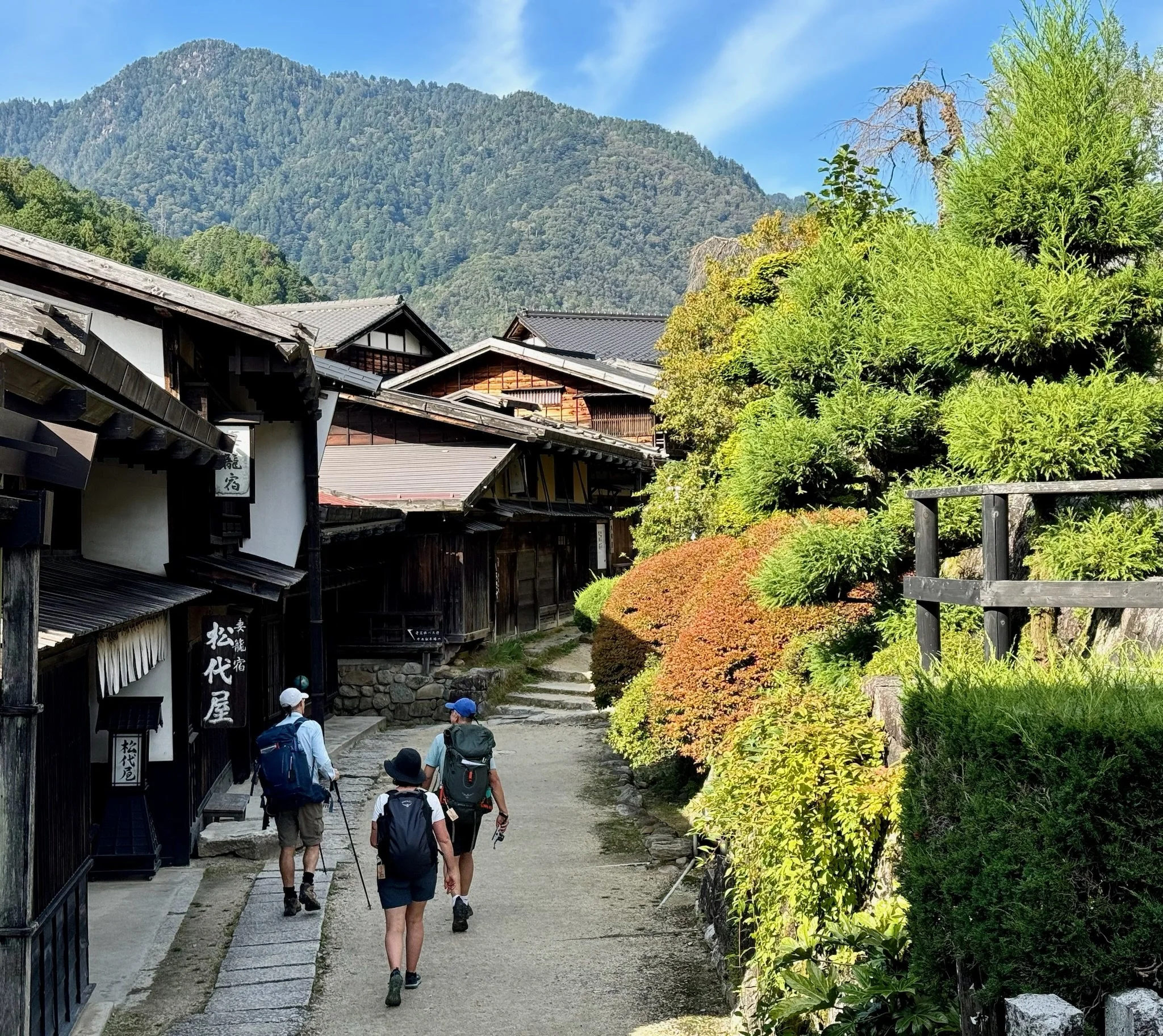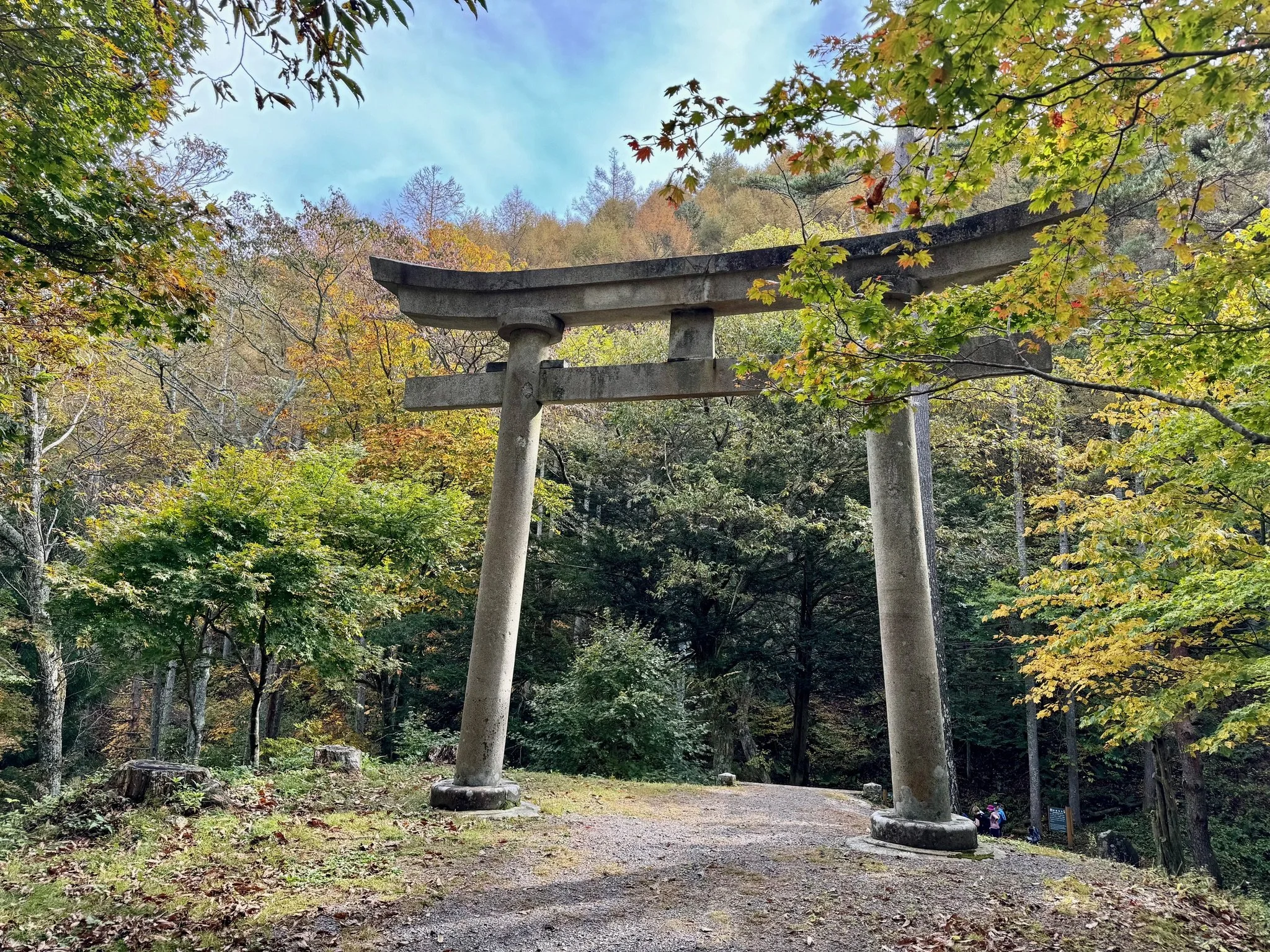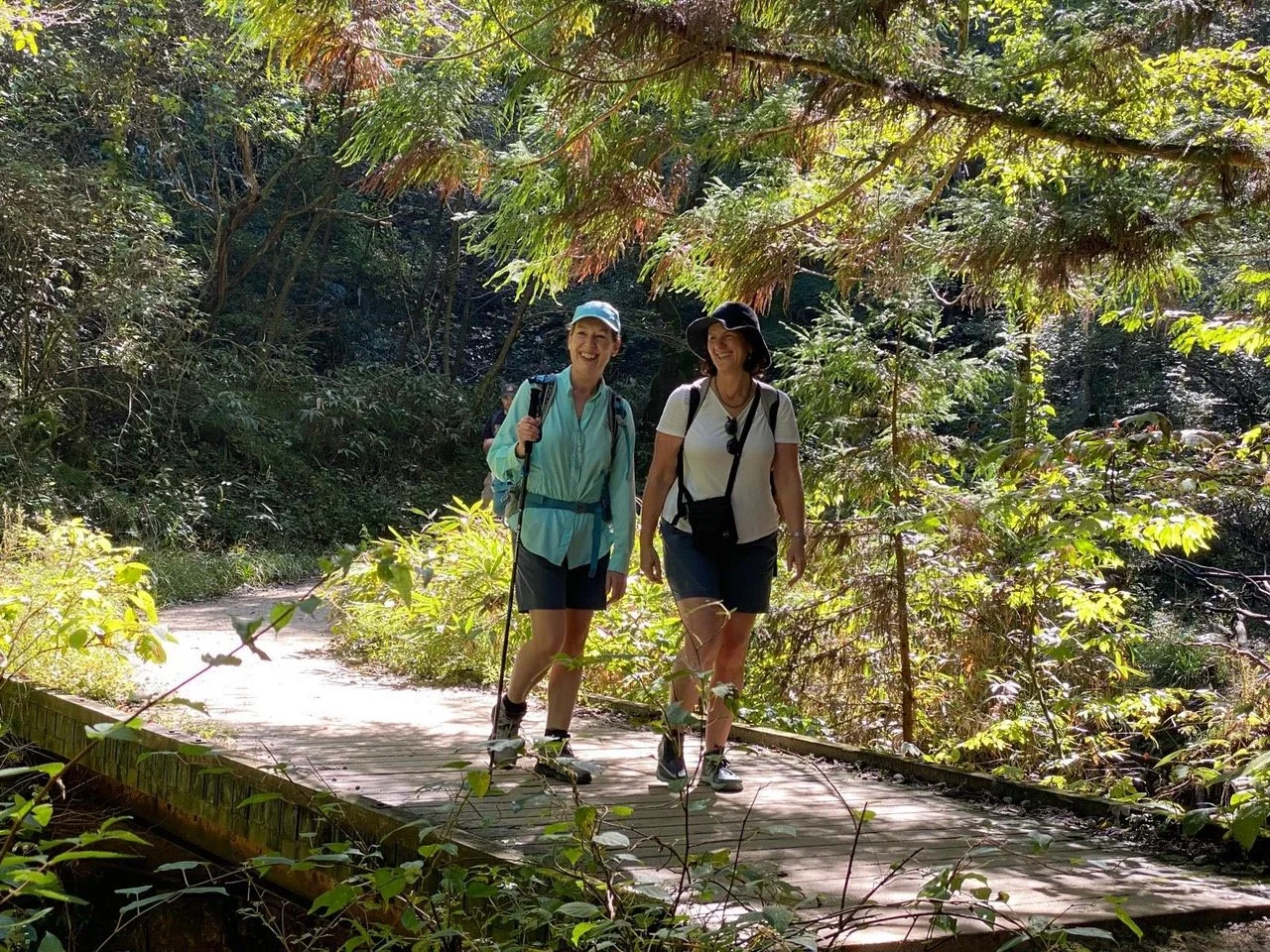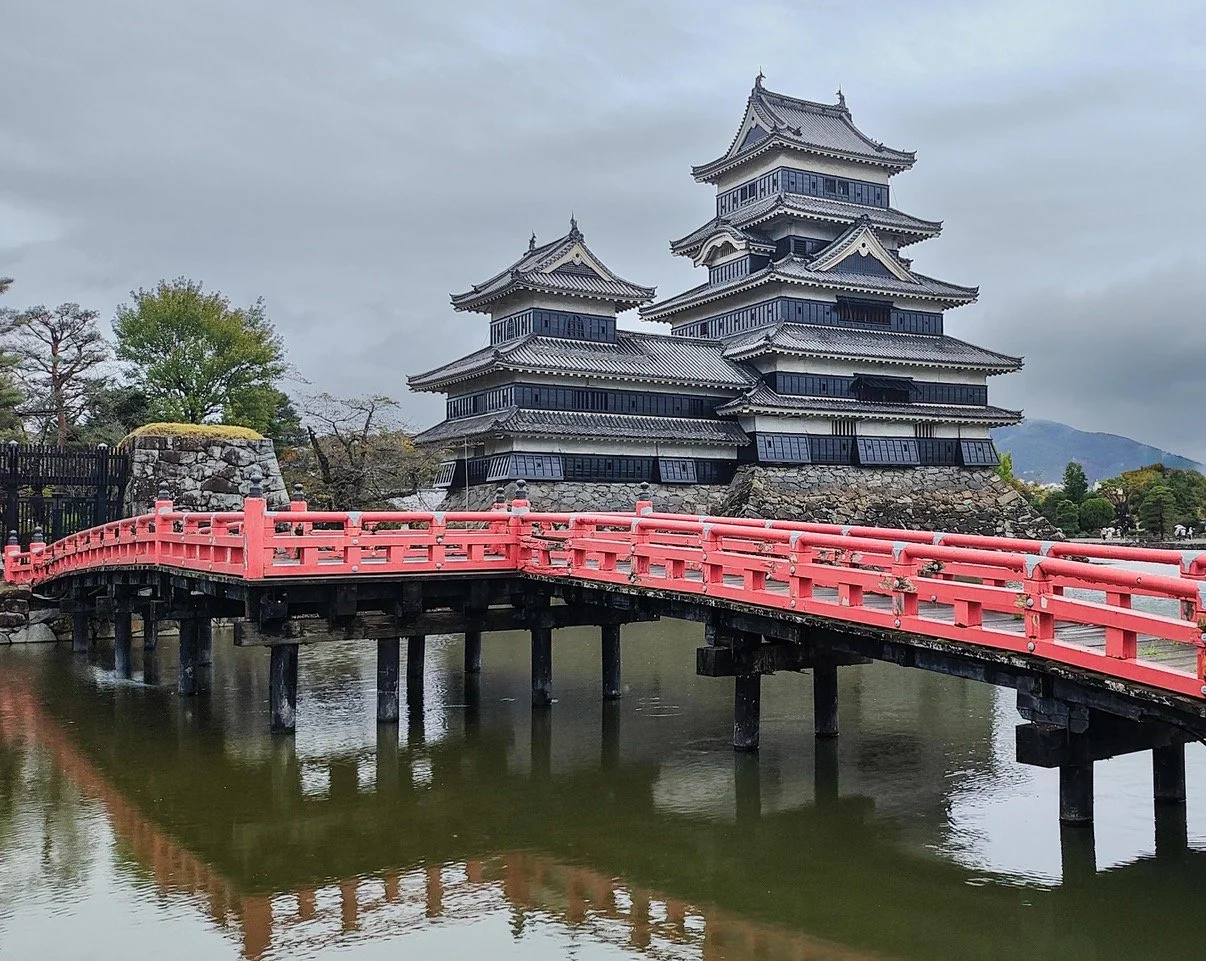Autumn on Japan’s Nakasendo Way
Japan’s Nakasendo Way provides a marvellous opportunity to immerse yourself in Japanese history, culture and cuisine. That experience is invariably the highlight for those that complete the walk. Stunning scenery is like the cherry on top.
The Nakasendo Way was created during the seventeenth century as a central mountain route linking the emperor’s imperial capital of Kyoto and the shogun’s political capital of Edo (now known as Tokyo). Constant processions of royals and feudal lords, making enforced visits to the powerful shogun, meant that the trail became lined with inns, eateries and other facilities. Later on in the Edo Period (1603-1867) the path also became an important trade route.
Needless to say, parts of the original path disappeared during the massive development of Kyoto, Tokyo and the areas in between. However, certain sections of the route remain, particularly along the scenic Kiso Valley which showcases dense forests and character-filled villages.
We walked the Nakasendo Way in late October with friends, Igor and Judy. As luck would have it, we were treated to the emergence of glorious autumn foliage along the way and no rainfall.
The first day of walking between Magome and Tsumago was the busiest day on the track as those quaint villages are favoured by day-trippers. In between those two historic settlements, we passed through thick woodlands, crossed the Magome-toge mountain pass and admired the Otake (men’s) and Medaki (women's) waterfalls. These two beautiful waterfalls traditionally served as segregated bathing areas.
Along the way, there was plenty of time to sample treats at the local teahouses. We quickly learnt tatami mat etiquette requiring the removal of one’s walking boots and sitting on the floor. This can be quite an adjustment for us westerners accustomed to the comforts of modern furniture.
There were many tempting snacks on offer, including gohei-mochi cakes which are unique to the Kiso Valley. Mochi cakes are very popular and are made from a mixture of pounded rice, walnuts, sesame and soy bean paste. Chestnuts are also in season in autumn and are particularly delicious in sweets such as Kuri Kinton (candied chestnuts with mashed sweet potato).
Throughout our five day walk, traditional Japanese cuisine was served at breakfast and dinner. Every meal was a memorable, and sometimes intriguing, degustation experience. In short, a foodies’ heaven.
Dishes included seafood sashimi, miso soup, marinated tofu, grilled fish, tempura prawns, pickled vegetables and fruit compote. For the more adventurous diners, there were occasional options of tempura eel, fried grasshoppers and even horsemeat sashimi. The latter dish was unsurprisingly polarising!
All this could be washed down with a refreshing Japanese beer, sake or wine. To complete the dining experience, guesthouses provided complimentary yukata gowns so that we all felt rather resplendent at meal times.
Each night we stayed at a traditional Japanese ryokan inn. Ryokans feature tatami mat bedrooms with futon bedding plus thermal hot springs onsen bathing. Onsens proved to be the perfect therapy for weary walking legs. For us westerners, the (gender segregated) naked bathing takes a little bit of adjustment but it soon feels natural.
Most days followed a wonderful pattern of valley and forest walking, passing farming fields, small villages, ancient temples and shrines. The track was well sign posted, easy to follow with manageable ascents and descents. Days varied in length, ranging between nine and eighteen kilometres.
Similar to Magome and Tsumago, the main street of Narai on the third day was lined with traditional wooden houses, inns, teahouses and shops. If you ignored the souvenir shops, it provided a delightful “step back in time” experience.
For those curious to learn more about the history of the area, there are some worthwhile museums and historic buildings to visit. The Rekishi Shiryokan Museum in Tsumago has good English signage and explains the extensive history of Tsumago and the Kiso Valley. There are also well preserved historic inns to visit in Tsumago including the grand Honjin (accommodation for nobility, feudal lords and government officials) and the more modest Wakihonjin (accommodation for travellers of lower social classes).
History buffs will also enjoy the Nakamura Residence in Narai which was built in the 1800s as a home and warehouse for a prosperous merchant family who dealt in traditional lacquered combs known as Nurigushi.
We opted to include the city of Matsumoto in our itinerary. Matsumoto Castle is one of Japan’s most historic castles. A tour of the castle provides a fascinating insight into the uncertain times of shogun and samurai warfare. Another worthwhile stop is the Matsumoto City Museum of Art which proudly displays the thought provoking artwork of renowned local artist Yayoi Kusama, including her uplifting giant polka dot pumpkin sculpture.
The Nakasendo Way attracts walkers from around the world. We met hikers from Europe, the UK, the US, Australia and New Zealand. As with most multi-day walks, a camaraderie developed among those on the trail. Everyone seemed to be thoroughly enjoying their time on the trail and their interactions with hospitable locals. Many were already discussing plans for their next Japanese walking holiday, which is probably the best endorsement of all.
In many ways, the Nakasendo trail is the ideal introduction to walking in Japan. It provides a welcome escape from the frenetic pace of the major cities and a fascinating glimpse into the more traditional forms of Japanese life.
Japanese feast at Kiso-Fukushima
Otake Waterfall
Tsumago
Narai
Torii toge mountain pass
En-route to Magome
Matsumoto Castle

